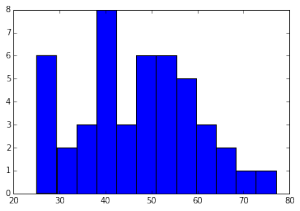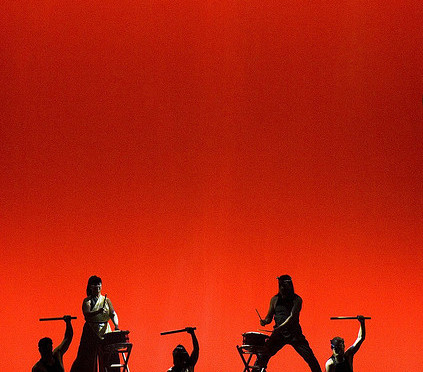Taiko is an ancient form of music performed throughout Asia. Its primary instrument is the drum in various shapes and sizes and it was used both to rally the troops and as a form of entertainment. It is remarkable what is not taught in schools as I had no idea upon going to a
joint performance of
Mu Daiko and
On Ensemble at Concordia College
on Friday night.
But this is one of the blessings of living in the Twin Cities. To be able to learn about and enjoy something like Taiko. All roads may not lead to St. Paul, but quite a few do pass through.
At any rate, I am not an expert in Taiko. I have heard enough classical music, been to enough operas and seen enough dance performances to separate the worst performances from the better ones. But what about Taiko, something I had never heard before. To begin with, one needs to discard certain preconceived notions of music genres and music itself. We all know, for instance, that music requires rhythm and melody. So what about Taiko which just has percussion? How does one get melody from drums? While Taiko will not flow like a tone poem, it is remarkable how a melody can come out of an ensemble of drums working in concert. And the funny thing about this melody is that it can be rather mesmerizing. A fiddle that plays the same three bars for a couple minutes straight sounds like a broken record. A Taiko company playing the same three bars for a couple minutes straight makes you focus on what is being played.
What also struck me was the dynamic range. Not only could individual drummers vary how hard they struck their instrument, but amplitude could also be varied by adjusting the syncopation. This way the individual instruments could stack their sounds on top of one another to produce a truly thunderous, gut vibrating rumble.
So I learned a lot about Taiko from from excellent performers. Twin Cities Mu Performing Arts Group joined up with Los Angeles based On Ensemble for rousing performance which combined traditional Japanese pieces with jazzy, almost lyrical new takes on the classics. The sounds coaxed from the drums ranged from gentle to crashing, though never too sharp due to the nature of the traditional instruments used. It is toe tapping, head nodding music. And when something less staccato than a 4′ diameter drum was called for, On supplied it with throat singing, a ukele and in a combined effort with Mu, flute. It was an dynamic performance. The act of drumming can be very physical. So why not show it off with choreography and flair? The performers to a person appeared energized by the music and to be thoroughly enjoying themselves.
The last time I heard intentional, feature length, purely drum performance was at a band/orchestra competition in high school. I found it tantalizing but also a bit of an oddity. Timpani in the Western musical ouvre, while essential, is rarely front and center. It generally cannot stand on its own. While it is obtuse to say that Mu and On really know how to play drums, I will say it anyway just in case anyone out there still can’t believe that 2 hours can fly by with nothing but. Mu really does know how to play drums. They may furthermore change the way you think about music.
Anonymous friend’s ticket was provided by the Theoroi Project, which I (Kaisa) am participating in! The picture is not from the performance — no photography — but instead from Flickr (Elaine’s Red Taiko #1).

